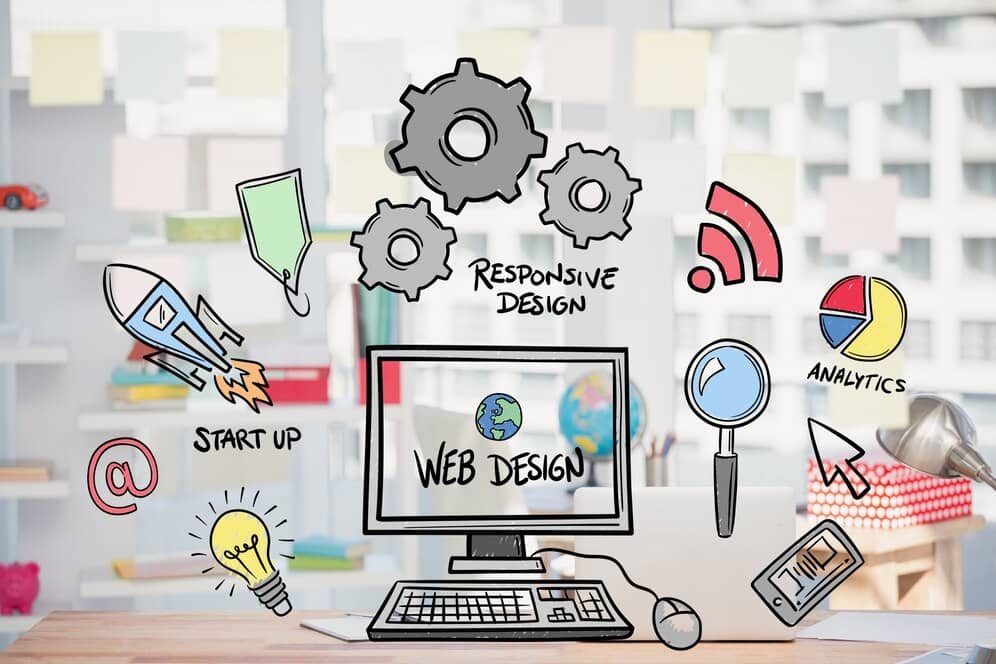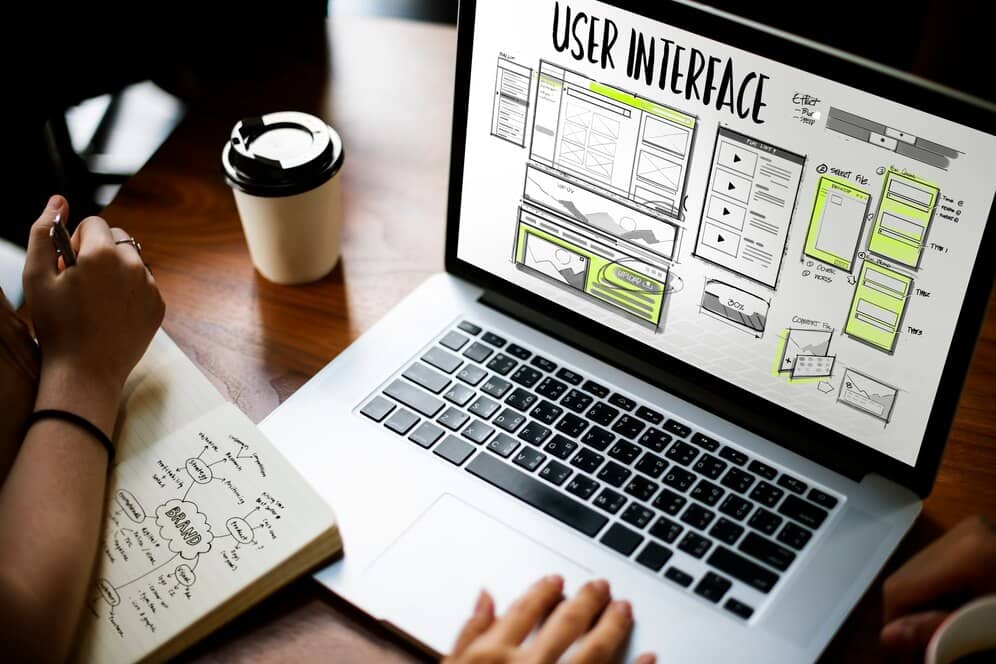How Has the Increasing Popularity of No-Code Tools Affected Traditional Website Design?

No-code tools like Webflow and Wix have changed the website design landscape. They allow anyone to create a website without coding skills.
But how has this shift affected traditional website design services? No-code tools are becoming more popular. They offer easy-to-use interfaces and quick results. This trend has led many to question the demand for traditional website designers. Some worry these tools might replace skilled developers.
Others believe there’s still a place for custom design services. This blog will explore the impact of no-code tools on traditional web design. We’ll look at why some businesses still choose professional designers. We’ll also discuss how designers are adapting to stay relevant in this changing market.

Rise Of No-code Tools
The rise of no-code tools like Webflow and Wix has been transformative. These platforms have empowered individuals without coding skills to create websites. This shift has impacted the demand for traditional website design services.
Historical Context
Website design has evolved significantly. In the early days, creating a website required extensive coding knowledge. HTML, CSS, and JavaScript were essential skills. Only skilled developers could build websites.
As technology advanced, CMS platforms like WordPress emerged. These platforms simplified the process. Yet, they still required some technical know-how. Then, no-code tools entered the scene.
Key Players In The Market
Several key players dominate the no-code market. Webflow and Wix are among the most popular. Webflow offers a powerful visual editor. It allows users to design, build, and launch websites without coding.
Wix, on the other hand, is known for its user-friendly drag-and-drop interface. It provides pre-made templates and customization options. Both platforms have lowered the barrier to entry for website creation.
Impact On Traditional Website Design Services
The popularity of no-code tools has affected traditional website design services. More people now use no-code tools to create their websites. This has led to a decrease in demand for traditional web designers. Yet, there is still a need for professional designers for complex projects.
Traditional designers now focus on larger, more intricate websites. They work on projects requiring custom coding and unique features. Many traditional designers also adapt by learning no-code tools. This helps them offer a broader range of services.
No-code tools like Webflow and Wix have revolutionized website creation. They have made it accessible to a wider audience. This has impacted the demand for traditional website design services. Yet, there remains a market for skilled designers. They are needed for complex and unique projects.

Ease Of Use
The ease of use offered by no-code tools like Webflow and Wix has made website creation accessible to everyone. These platforms have simplified the process, ensuring that even those with no coding experience can build functional websites.
User-friendly Interfaces
User-friendly interfaces are a key feature of no-code tools. They are designed to be intuitive, with clear instructions and guidance at every step. This simplicity reduces the learning curve, allowing users to start building their websites quickly.
Drag-and-drop Functionality
The drag-and-drop functionality is another significant advantage. Users can select elements such as text boxes, images, and buttons from a menu and place them anywhere on the page. This visual approach makes it easier to understand how the final website will look.
With traditional web design, coding knowledge is essential. But with no-code tools, the process becomes more about creativity and less about technical skills. This shift has led to an increase in people creating their own websites, reducing the need for traditional web designers.
Impact On Web Design Industry
The rise of no-code tools like Webflow and Wix has changed the web design industry. These tools offer ease of use and speed, which attracts many users.
Shift In Skill Requirements
Traditional web designers needed to know coding languages like HTML, CSS, and JavaScript. Now, with no-code tools, the focus has shifted. Designers must understand how to use these platforms.
Below is a comparison of traditional and modern skill requirements:
| Traditional Skills | Modern Skills |
|---|---|
| HTML, CSS, JavaScript | Platform-specific skills (Webflow, Wix) |
| Backend Development | Visual Design |
| Responsive Design | Drag-and-Drop Interface |
Increased Accessibility For Non-developers
No-code tools have made web design accessible to non-developers. People without coding knowledge can now create websites.
This increased accessibility has led to several benefits:
- Cost savings – No need to hire a developer.
- Speed – Faster creation and deployment of websites.
- Flexibility – Easy updates and changes to the website.
These tools empower small business owners, entrepreneurs, and even students to build their own websites.
Cost Implications
The rise of no-code tools like Webflow and Wix has reshaped the web design landscape. One significant area of impact is cost. Let’s explore the cost implications of this shift.
Reduction In Development Costs
No-code tools have brought a reduction in development costs. Traditional website design often requires hiring developers. This can be expensive. With no-code tools, users can build websites themselves. This reduces the need for professional developers. As a result, overall project costs are lower.
These tools also save time. Building a website with no-code tools is faster. Less time spent on development means fewer billable hours. This further reduces costs.
Subscription Models And Pricing
No-code platforms use subscription models. This differs from traditional web design services. Traditional services often require a large upfront payment. No-code tools spread costs over time. Users pay a monthly or yearly fee.
Subscription models are flexible. Users can choose plans that fit their needs. Basic plans are often affordable. More advanced features come with higher-tier plans. This allows for scalability as needs grow.
Overall, no-code tools offer cost-effective solutions. They make website creation accessible to more people. This has changed the demand for traditional web design services.
Speed Of Development
The rise of no-code tools like Webflow and Wix has changed the website design landscape. One of the most significant impacts is the speed of development. These tools allow users to create websites faster than ever before. This is especially beneficial for small businesses and startups.
Faster Prototyping
No-code platforms enable quicker prototyping. Users can draft a website concept in hours rather than days. This quick prototyping helps in visualizing ideas and making necessary changes before finalizing the design. The ability to see a working model of the website early in the process saves both time and resources.
For example, consider the following benefits:
- Instant feedback on design
- Easy adjustments based on user input
- Reduced development time
This efficiency allows businesses to stay competitive and adapt to market changes swiftly.
Rapid Iteration And Deployment
With no-code tools, iteration and deployment are much quicker. Traditional methods often require lengthy coding and testing phases. In contrast, no-code platforms simplify these steps. Users can make changes and deploy updates in real-time. This rapid iteration process ensures that the website remains current and functional.
Consider the following advantages:
| Traditional Development | No-Code Tools |
|---|---|
| Weeks of coding | Hours of design |
| Complex testing | Simple adjustments |
| Delayed updates | Instant deployment |
This speed allows businesses to respond quickly to user feedback. It also helps in maintaining a competitive edge in the digital market.
Quality And Customization
The rise of no-code tools like Webflow and Wix has changed the website design landscape. These tools offer easy-to-use platforms that anyone can use to build a website. But how do these tools stack up in terms of quality and customization?
Limitations Of No-code Tools
No-code tools are great for beginners and small businesses. They allow users to create websites quickly without coding skills. But these tools have their limits. For example:
- Template Restrictions: No-code tools offer pre-designed templates. These templates can be limiting in terms of design flexibility.
- Performance Issues: Websites built with no-code tools can be slower. This can affect user experience and SEO rankings.
- Limited Scalability: As a business grows, its website needs may change. No-code tools may not offer the advanced features needed for large websites.
Advanced Customization Options
Traditional website design services offer a higher level of customization. This allows businesses to create unique websites that stand out. Some advantages include:
- Custom Code: Developers can write custom code to meet specific needs. This allows for unique features and better performance.
- Better SEO: Custom websites can be optimized for SEO. This improves search engine rankings and attracts more visitors.
- Scalability: Custom websites can grow with the business. They can easily add new features and handle more traffic.
In conclusion, while no-code tools are useful, they have limitations. Traditional website design services offer better quality and customization. This can be crucial for businesses that need a unique and scalable online presence.
Integration With Traditional Development
The rise of no-code tools like Webflow and Wix has changed the landscape of web development. Many worry about the future of traditional website design services. Despite these concerns, no-code tools are not replacing traditional development. They are reshaping how developers and designers work together. Integration with traditional development offers a hybrid approach that combines the strengths of both methods.
Hybrid Approaches
Hybrid approaches blend no-code tools with traditional coding. This creates a flexible and efficient workflow. Developers can use no-code tools for rapid prototyping. Once the prototype is ready, they can refine the code. This method speeds up the design process. It also allows for more experimentation and creativity.
Using a hybrid approach helps meet diverse client needs. Clients who need quick solutions can benefit from no-code tools. Clients with more complex requirements can rely on traditional coding. This way, developers can offer tailored solutions for every project.
Collaboration Between Developers And Designers
No-code tools have improved collaboration between developers and designers. Designers can now create functional prototypes without coding knowledge. This helps them communicate their vision more clearly. Developers can then take these prototypes and build on them. This reduces miscommunication and speeds up the development process.
Collaboration tools within no-code platforms also streamline project management. Teams can work together in real-time. They can share feedback and make changes instantly. This ensures everyone stays on the same page. The end result is a smoother workflow and a better final product.

Future Of Web Design
The increasing popularity of no-code tools like Webflow and Wix has changed the web design landscape. These platforms allow users to create websites without coding knowledge. This shift affects the demand for traditional website design services. What does the future hold for web design?
Predictions And Trends
No-code tools will likely continue to gain popularity. More people will use them to create websites quickly. This trend could reduce the demand for traditional web designers. Yet, skilled designers will still be needed for complex projects.
Custom designs will stand out more in a world of template-based sites. Businesses may seek unique designs to differentiate themselves. This could create a niche market for traditional web designers.
Potential Challenges And Opportunities
Traditional web designers may face challenges. They might need to adapt and learn new tools. No-code platforms could be an opportunity for them to expand their skills.
The demand for user experience (UX) and user interface (UI) design will likely grow. No-code tools often lack advanced UX/UI features. Designers with expertise in these areas will be valuable.
Collaboration between no-code users and traditional designers could be beneficial. Combining strengths can lead to better website outcomes. This partnership could create new opportunities in the industry.
The rise of no-code tools is reshaping web design. While it presents challenges, it also offers opportunities for growth and innovation.
Frequently Asked Questions
How Do No-code Tools Impact Web Design?
No-code tools simplify web design for non-developers, reducing the demand for traditional web designers. They empower users to create websites easily, making web design more accessible.
Are Traditional Web Designers Still Needed?
Yes, traditional web designers are needed for complex, custom websites. No-code tools can’t replace the expertise and creativity of professional designers for advanced projects.
Do No-code Tools Offer Complete Customization?
No-code tools offer limited customization compared to traditional web design. They provide templates and basic editing options, but lack the flexibility for highly customized designs.
Are No-code Tools Cost-effective?
Yes, no-code tools are generally cost-effective. They reduce the need for hiring professional designers, making website creation more affordable for small businesses and individuals.
Conclusion
The rise of no-code tools like Webflow and Wix has reshaped web design. Traditional services face reduced demand but still hold value. Complex, custom websites often need professional expertise. No-code tools cater to simpler projects and small businesses. Both approaches now coexist, meeting diverse needs.
Adaptation is key for traditional designers. Embrace no-code tools to stay relevant. Clients benefit from faster, cost-effective solutions. The web design landscape continues to evolve. Balancing both methods ensures success in a competitive market.



